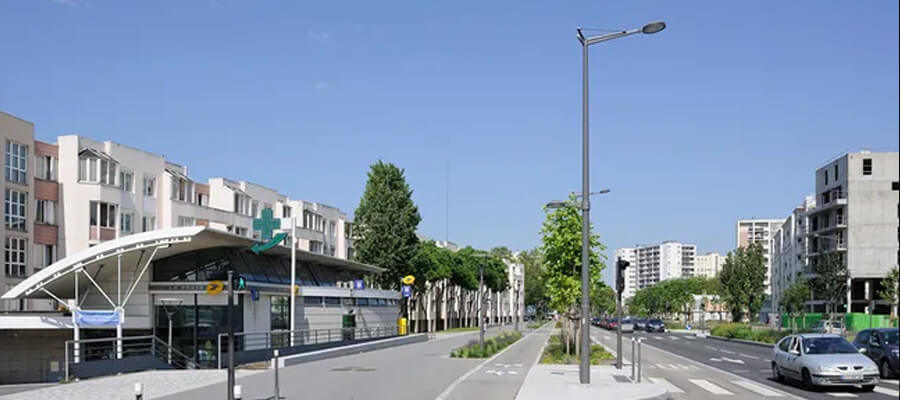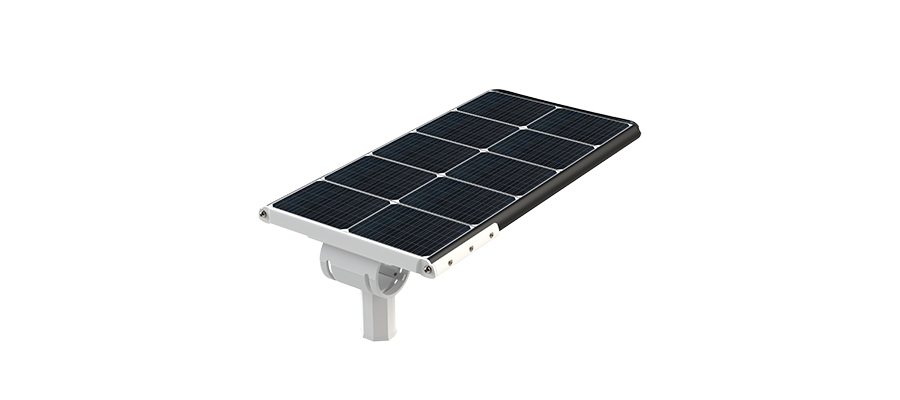Tips for Choosing Solar Panel of Solar Powered Street Light
2021-08-19
VIEW "1570
Lighting hours of the solar powered street light is not only related to the capacity of the battery, but also the size of the solar panel determines the charging capacity in a day. Therefore, the correct choice of solar panels is also very important. Solar panels are devices that directly or indirectly convert solar radiation energy into electrical energy through photoelectric or photochemical effects by absorbing sunlight. The main material of most solar panels is "silicon". How to select solar powered street light with high performance solar panels bothers some people. Today we will briefly introduce the knowledge about the purchase of solar panels.
Solar panels currently on the market are divided into amorphous silicon and crystalline silicon. Among them, crystalline silicon can be divided into polycrystalline silicon and monocrystalline silicon.

Amorphous silicon solar panel
The manufacturing method of amorphous silicon solar panels is completely different from that of monocrystalline silicon and polycrystalline silicon solar panels. The process is greatly simplified, the silicon material consumption is small, and the power consumption is lower. Its main advantage is that it can generate electricity in low light conditions. However, the main problem of amorphous silicon solar panels is that the photoelectric conversion efficiency is low. The international advanced level is about 10%, and it is not stable enough. As time goes by, its conversion efficiency decays.
Polycrystalline silicon solar panel
The photoelectric conversion efficiency of polysilicon solar panels is about 12%. In terms of production cost, it is cheaper than monocrystalline silicon solar panel, the material is simple to manufacture, it saves power consumption, and the total production cost is lower, so it has been developed in a large amount. In addition, the service life of polycrystalline silicon solar panels is shorter than that of monocrystalline silicon solar panels. In terms of cost performance, monocrystalline silicon solar panels are better.
Monocrystalline solar panels

The photoelectric conversion efficiency of monocrystalline silicon solar panels is about 15%, and the highest is 24%. This is the highest photoelectric conversion efficiency of all types of solar panels, but the production cost is relatively high. Since monocrystalline silicon is generally encapsulated with toughened glass and waterproof resin, it is durable and has a service life up to 15 years. The price is also the highest among the three types of
solar panels of solar street lamp.
From the perspective of the photoelectric conversion efficiency of the three materials, it is: monocrystalline silicon (up to 24%)>polycrystalline silicon (12-15%)>amorphous silicon (about 5%). However, crystalline silicon (single crystal silicon and polycrystalline silicon) basically has no current generation under low light, and amorphous silicon has a good low-light type (the energy is inherently small under low light). So on the whole, solar powered street lights can use monocrystalline silicon or polycrystalline silicon solar panels, and users can choose according to their own budget.
When we buy solar panels, our focus is on the power of the solar panels. The output power of the solar panel is under the standard sunlight conditions, that is, the sunlight conditions at noon on a sunny day. At different times and in different locations, the output power of the same solar panel is different. Generally speaking, the power of the solar panel is proportional to the area of the solar wafer. The area of the solar panel wafer is not exactly the same as the area of the solar packaging panel, because although some solar panels are large, the gaps in the arrangement of single solar wafers are very wide, so the power of such solar panels is not necessarily high. When the solar powered street light is configured, if the power of the solar panel is low, it may cause the battery to be unsatisfied. The performance was normal at first use. But after several rainy days, the battery will continue to provide electricity for the solar powered street light under the condition of insufficient light in the rainy day, which will cause the street lamp to dim, and the whole change in less than a year. Therefore, when we configure solar panels, the selected power must be suitable for the battery. If you are not good at this, you can consult a professional solar powered street light manufacturer. Experienced solar powered street light manufacturers can reasonably configure solar street lamps according to the user's local climate conditions and lighting needs.

